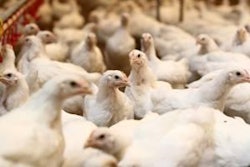Thanks to the salmonella outbreak associated with peanut butter products, food safety has re-emerged as a major policy issue in Washington. Because the peanut butter case comes on the heels of E. Coli in spinach, food safety concerns initially attributed to tomatoes and melamine in pet food, FDA's food inspection system is under the congressional microscope.
Currently five separate proposed bills dealing with potential changes at FDA have been introduced. Some bills look to reform the existing FDA food inspection system while others seek to separate the food inspection authority from FDA's other duties by creating a separate agency within the Department of Health and Human Services just to regulate food products.
Debate may touch USDA
Though the spotlight currently is on FDA, it is difficult to imagine an extended food safety debate that does not touch in some way on USDA's inspection of poultry and meat products. This is not necessarily a bad thing. USDA and the industries it regulates have a positive story to tell. Beginning with 1998's implementation of the Pathogen Reduction/HACCP Rule, poultry and meat processors have been able to meet some significant food safety objectives that have resulted in some clear public health benefits.
In the past, there have been calls to combine FDA and USDA inspection into a single, independent food safety agency. That doesn't appear to be the case this year. FDA's critics seem focused on addressing the issues and aren't likely to confuse the effort by tackling a project as large as creating a combined food safety agency. Still, as the debate moves forward, there will be a temptation on the part of some to say, "If we're giving FDA certain new authorities, why shouldn't USDA have those authorities as well?"
The answer, of course, is that the inspection systems have significant differences, and what applies to one type of inspection is not necessarily appropriate for another. More importantly, USDA has been progressive in modernizing its food safety system and any discussion of poultry and meat inspection should be considered in that light.
Framework for future progress
NTF is encouraged to learn that the House Agriculture Committee has decided to hold a comprehensive food safety hearing. Chairman Collin Peterson, District of Minnesota, has always been a thoughtful leader on food safety issues, and his committee has jurisdiction over the poultry and meat inspection statutes.
His committee has an opportunity to chronicle the progress USDA has made in the last 11 years and to create a framework for discussion on how the department moves forward in the years ahead.
For example, Congress can learn a lot by understanding the history of FSIS' implementation of the Pathogen Reduction/HACCP rule. Implementation wasn't always smooth but the results have been significant. HACCP and other USDA programs, combined with major innovations by poultry and meat processors, have allowed the industry to make significant reductions in pathogen prevalence. For example, NTF and its membership worked diligently to decrease the incidence of the naturally occurring salmonella in raw poultry products. Salmonella in whole birds has been cut by more than half (7.1% in 2006 vs. 19.6% in 1997). The industry will continue to research emerging technologies to reduce naturally occurring pathogens in turkey products.
Actions should enhance safety
Change solely for the sake of change is never a good idea. We will continue to oppose those proposals that seek to impose new penalties or restrictions that do nothing to enhance the safety of the food supply. But the turkey industry should welcome a discussion of where USDA inspection and industry efforts are today, how they got there and what the logical steps for the future are. All stakeholders should be looking for constructive ways to help industry and the government meet strong, science-based food safety objectives that have demonstrable public health outcomes.
NTF and its members will continue communicating this message to members of Congress and others concerned with the process. We will continue educating them about the industry's many ongoing food safety efforts. And we will continue to keep the American consumer a partner in the food safety effort through ongoing education about proper at-home food safety practices.


















